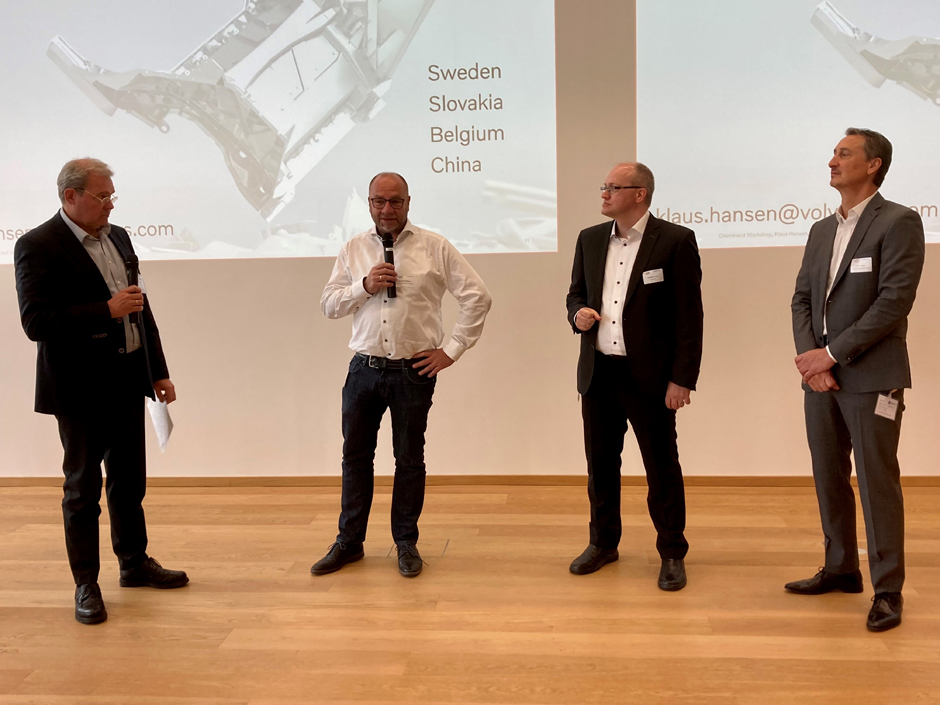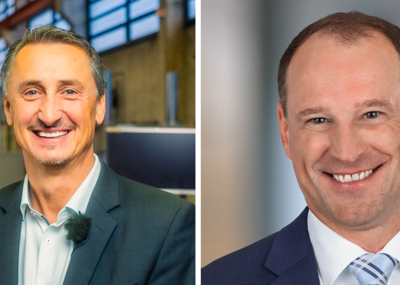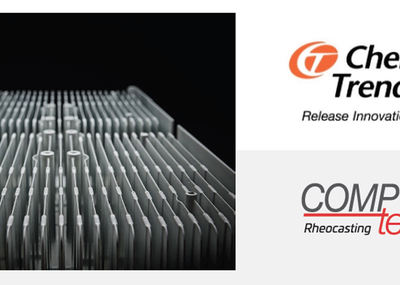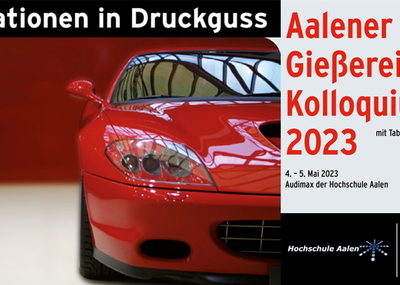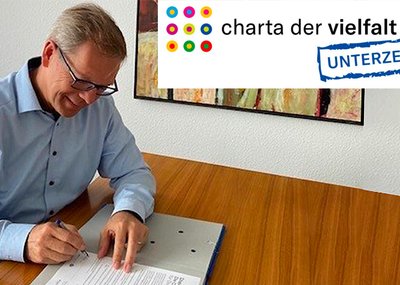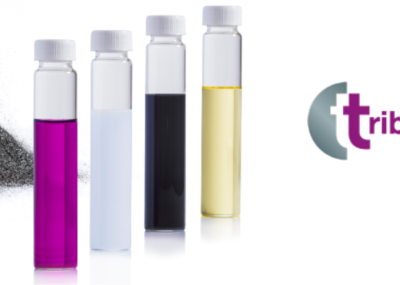After the welcome and official opening speech by Darko Tomazic and Joachim Breit, Field Sales Manager of Chem-Trend, Dr Norbert Hoffmann, Managing Director of the Light Metal Centre Soltau of the Technical University of Braunschweig, spoke about sustainability in the die casting industry. In this context, Hoffmann highlighted the effects on the life cycle analysis of a casting by conventional spraying, excessive conventional spraying, reduced quantity spraying and microspraying.
The success of HERA™ microspraying
In the following presentation, Darko Tomazic and Albrecht Vogel introduced HERA™, an innovative microspraying technology developed by Chem-Trend. HERA™ enables foundries to modify their release agents, leading to immense improvements in productivity, efficiency, and sustainability. "HERA™ has an impact on the microstructure of the cast components, leaves little residue on the surfaces and is therefore perfectly suited for components that are joined or coated," states Darko Tomazic.
"When switching to microspraying, however, the human factor must be considered. Because, if the employees are not really convinced about it or are not familiar with the process, microspraying will be difficult to implement. For this reason, Tomazic advises involving the employees on the casting machines in the technology change and providing them adequate training so that they gain an understanding of this process. From the technical point of view, it is important to constantly control the temperature balance. This, in combination with appropriate staff training, is the success factor of HERA™ microspraying.
GIGA-CASTING Project in Planning: Five New Foundries for VOLVO
The contribution of Klaus Hansen, technical director of VOLVO - who joined the Chem-Trend Forum 2023 by video - generated a lot of interest. Hansen revealed that VOLVO is planning five new foundries in Sweden, Belgium, Slovakia, and China. Impressive is the size of the plants! The biggest of the five foundries will be built in China, with a length of no less than 1.8 kilometres and a melting capacity of 60 tonnes per hour!
Cost-saving potential through modern hydraulic fluids
An introduction in modern hydraulic fluids offered Tanja Huge, Sales & Technical Consulting in die casting from Chem-Trend. Among other things, the choice of hydraulic fluid influences cavitation. And cavitation in hydraulic systems means internal destruction, for example in hoses. According to Huge, the solution lies in reducing cavitation with a better lubrication of the fluid-carrying components. In the past, HFC lubricants were used as they are fire-resistant, economical, and biodegradable.
However, the disadvantage is that the water-based media are hazardous for health and offer a lower lubrication performance compared to HFD-U media.
In her presentation, Tanja Huge highlighted the advantages of water-free, low-flammability HFD-U hydraulic fluid. "With HFD-U, we achieve an 80 percent reduction in cavitation damage. Machine breakdowns due to faulty hydraulics are reduced by 74 per cent," states Huge. In addition, HFD-U is free of dangerous substances, offers excellent corrosion protection, is biologically decomposable and less complex in terms of wastewater treatment.
This was also shown in the practical test, where two machines were set up under the same casting parameters for one year each. After 14 months, a damage was already evident in the die casting machine in which HFC was used, while no cavitation damage was detected in the die casting machine operated with HFD-U. At the same time, monetary differences became visible.
With the HFC-operated machine, electricity cost savings of around 10 percent were achieved. Savings are an important factor in times of rising energy prices. "There is an extreme pressure on suppliers to cut costs, as OEMs have been reluctant to support the cost increases," states Huge.
How simulation can support microspraying
Dr. Götz Hartmann, authorised signatory of MAGMA Gießereitechnologie GmbH, demonstrated how simulation can support microspraying. Simulation means constant testing and optimising on virtual platforms. Simulation offers a wide range of information, in comparison to crash test results, which only provide limited information. It should be emphasised that microspraying and simulation can be developed synchronously. The question is how far simulation corresponds to reality. "That is not easy to answer. If I have a parameter, I have to ask: How does the result change in relation to the temperature? With trends, I am sure that it works. Not uncritically, but with respect," states Hartmann. Hartmann's prognosis for the future: "What we want is a component, process and economic optimisation through efficient tool optimisation with a focus on microspraying."
How piston lubrication must work in the microspraying process
In his contribution, Gerhard Kanzok from Wieland Caro GmbH discussed the advantages of minimum quantity lubrication for pistons. According to Kanzok, the microspray process causes less contamination on the component. In addition, the piston does not run dry, instead it runs permanently in a wetted filling chamber. Thus, the piston/chamber operating times increase. Process monitoring also allows measuring the repeatability, as the data can be retrieved at any time.
ROBAMAT: Powerful pump and cooling technology
Competence in heating, cooling, and cleaning – that's what ROBAMAT from Austria offers. In his presentation, CEO Norbert Obermair informed about the innovative multi-circuit temperature control system for close-contour cooling in die-casting moulds. "Our devices have a powerful pump (200 l per minute), as well as a very strong cooling technology. By reducing the thermal stresses within the die casting mould, the ROBAMAT reduces the risks of water shot as much as possible," explains Obermair. This is achieved through the permanent circulation of the heat transfer medium, which, according to Obermair, is the key to successful die casting. Thus, micro quantity spraying concepts are easily possible and reduce the cycle time.
New requirements in die casting for peripheral equipment
Meeting new challenges in die casting through innovative peripherals is part of the philosophy of Fondarex Europe GmbH. In his presentation, Dr Andreas Mertz, research and development engineer at Fondarex, emphasised the importance of peripherals. "There is a strong tendency towards microspraying to reduce heat loss and thermal shock." According to Mertz, the new challenges in die-casting are long distances, large blast areas, wall thicknesses of 3 to 5 mm, high filling speeds and low pressure spraying at the end of mould filling. According to Mertz, the Fondarex vacuum system meets these requirements through highly dynamic point cooling, efficient cooling of local hotspots such as on cores for pre-cast holes, and real-time data transmission to external systems via OPC-UA. The Fondarex portfolio also includes squeezpin facilities. This is a mobile system for local re-compression of the melt during die casting with hot and cold chamber die casting machines. Another topic is AI. "Data collection is also important for peripheral equipment. Nowadays, AI evaluation of die-casting machines is good, but not yet for peripheral devices," states Mertz.
Microspraying and its variations: Choosing the right release agent
Joachim Breit, Field Sales Manager of Chem-Trend, offered a direct comparison of the spray versions. According to Breit, water-based microspraying is currently the best solution on the market, as it is more efficient, more form-friendly and possible in very small quantities (ml). Low pressure is sufficient for spraying. However, with low-volume spraying, a compromise is necessary, as the release agent is applied from a greater distance and under higher pressure. On the other hand, hybrid spraying is inefficient because the process is technologically more complex and the energy consumption is higher." Chem-Trend supports you in choosing the right release agent for better production results and more sustainability in die casting," states Breit at the end of his presentation.
24 / 7 availability and 0 percent scrap
Last, but not least - was the presentation by Christian Alexander Hermann, Senior Instructor of the Bühler Group. "The rise of the strut brace accelerated the need for structural parts in die casting. Aluminum has the potential to be CO₂ neutral. Our sustainability targets are 80 percent less water, 50 percent less energy, 80 percent less scrap. We are working on optimising cycle times, 24/7 availability and 0 per cent scrap."
The Chem-Trend Forum 2023 was concluded by a panel discussion with Dr Götz Hartmann as moderator. The participants were Dr Norbert Hoffmann, Christian Hermann, Klaus Hansen (virtual) and Darko Tomazic. The fact that microspraying will become essential in the future - that was something everyone agreed on.
Diana Engelmann

